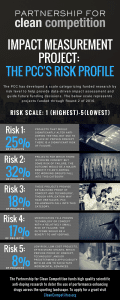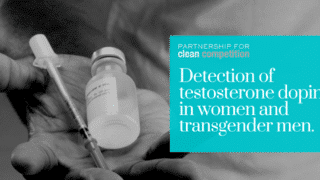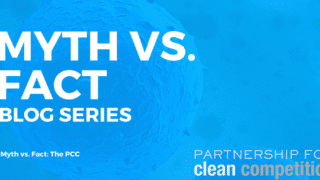Since 2008, the PCC has worked to fund investigator-led anti-doping research, with an emphasis on funding projects with a high likelihood to deter and detect doping across the sporting landscape. Recognizing the importance of a data-driven approach to assess the impact of current (and future) PCC-funded research, the PCC set out in 2017 to collect and analyze metrics which help tell the PCC’s story, and will be used to guide future funding priorities.
One such metric is the risk level of PCC-funded projects. With the help of the PCC Scientific Advisory Board, the PCC rated all research awarded funding since 2008 a risk assessment from 1-5, with 1 representing the riskiest projects the PCC funds (i.e. multi-year projects often involving the development of cutting edge technologies) and 5 representing the least risk (i.e. micro-grants gathering preliminary data for larger studies).
The following infographic shows the percentage per risk level for 105 funded research projects from 2008-2016, as well as a definition for each level. (click to enlarge).
The creation of a PCC risk profile will help inform the future of PCC funding activities, and is one piece of the puzzle to help us address gaps in anti-doping research. The PCC is excited to work with our stakeholders from the scientific, athletics, and anti-doping communities to develop this young project into a robust tool to encourage and accelerate scientific anti-doping impact.





